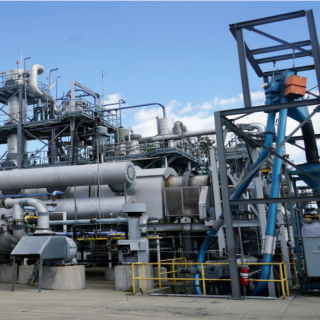Advertisement
1) “Advanced” Nuclear Reactor Project at Portsmouth:
2) Davis-Besse chosen as pilot site for hydrogen production research:
3) U.S. Deregulation of “Very Long Lived” Radioactive Waste“
Advanced” Nuclear Reactor Project at Portsmouth: On April 29, 2020, the U.S. Department of Energy (DOE) awarded a nearly $5 million grant to Southern Ohio Diversification Initiative (SODI) to support a potential advanced reactor project at the Portsmouth Nuclear Site at Piketon, Ohio. The money would subsidize “a broad range of advanced reactor technologies.” So-called “advanced” reactors are funded by the government (no industry will risk $, banks won’t loan) in an attempt to keep a dying industry alive. The DOE brags about deploying this new technology anywhere in the world (i.e., weapons proliferation and poisoning), creating a "walk away" passive safety system that insures the reactor will never melt down (walk away from responsibility) and a 20-year fueling cycle (bury them in the ground and essentially abandon them.)
SODI is one of more than a dozen “Community Reuse Organizations” (CROs) established and funded by the DOE as “liaisons between the Department and the communities around nuclear sites,” to “promote redevelopment of nuclear sites” and for “workforce re-training.” Their underlying purpose is promoting new nuclear technology at existing and shuttered nuclear sites and selling or transferring radioactively-contaminated DOE property.
Davis-Besse chosen as pilot site for hydrogen production research: In January 2020, Idaho National Laboratory announced that Ohio’s Davis-Besse nuclear power plant on Lake Erie would be the site of a $10 million (80% publicly-funded) project to research the production of hydrogen at commercial nuclear reactors. No Environmental Impact Statement is being required on the dangers of hydrogen next to a nuclear plant.
Hydrogen is not a source of energy; it is a means of energy storage. Using electricity to split water (H20) to release hydrogen has limited applications, because it is more efficient to use the electricity directly for power. Fuel cells work by converting hydrogen into electricity with the waste product being water. Fuel cells are a clean, renewable concept that is useful for small on-site applications, such as a single home or a stand-alone fueling station for a bus or car, or other fuel-cell operated device. So, it's not that hydrogen technology isn't “there” yet. It's there for small storage and fuel cell use and continues to improve in the way of efficiency and less cost. If the intent is to combust hydrogen to produce energy, the technology will never "be there" for large-scale combustion of hydrogen. Combustion uses three times the hydrogen needed for the same amount of electric energy produced by a fuel cell.
If an industry has considerable “excess” or “wasted” energy, it is a prime candidate for closure. ANY form of power, renewable or not, can be used to run an electrolyzer to split water to make hydrogen. So to claim nuclear power is cleaner because it is being used to create “clean hydrogen” for “clean power generation” in a fuel cell is misleading. It is much better to use “clean hydrogen” to store the excess power from wind and solar. Hydrogen production is a ruse to create a “seeming” market for electricity from nuclear reactors, which we note is an attempt to rationalize and justify the dwindling need for nuclear-generated electricity. And yet another nuclear subsidy.
U.S. Deregulation of “Very Long Lived” Radioactive Waste: In the most massive deregulation of radioactive waste in U.S. history, the Nuclear Regulatory Commission (NRC) has proposed a new category of radioactive waste that would go into ordinary, unregulated landfills. The NRC is calling this “VERY LOW LEVEL WASTE” (VLLW) leaving out the word “radioactive.” Since the amount of radioactivity in VLLW is not defined by statute or even by the NRC, activists are calling this the “Very Large Loophole Waste” proposal. The NRC caps the annual “cumulative dose” from VLLW dumped into unlicensed sites to 25 millirems – the same pseudo-scientific cap currently used for highly regulated radwaste disposal sites. It gives a green light to the release of unlimited amounts of waste with NO public notification or opportunity to intervene or even comment. This is one more dangerous nuclear proposal being shamelessly brought forth during the coronavirus pandemic. This is a huge environmental justice issue, with low-income and racial minorities more likely to live close to potential dumpsites. The NRC has had numerous complaints about setting a deadline during the pandemic, so they now say “Staff will continue to monitor the COVID-19 pandemic to determine if an additional extension may be warranted.” SEND OBJECTIONS TO: VLLW_ScopingStudy@nrc.govand reference NRC–2020–0065.



